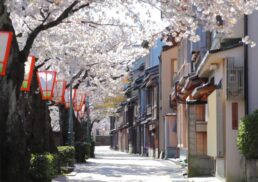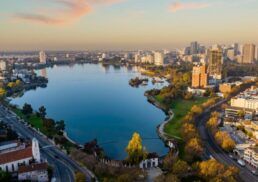Sicily is a Mediterranean island rich in history and culture. Known for its diverse influences, from Greek to Norman, Sicily offers unique attractions and experiences. This article guides you through the island’s top sights, historical landmarks, and travel tips.
Table of Contents
Key Takeaways
Sicily’s unique cultural identity is shaped by influences from various civilizations, including Greeks, Romans, Byzantines, Arabs, and Normans, which are evident in its festivals, traditions, and landmarks.
Top destinations in Sicily such as Palermo, Catania, and Taormina offer rich cultural experiences, with notable attractions including the Cathedral of Monreale, the ancient theatre in Taormina, and vibrant local markets.
Sicily offers stunning natural wonders like Mount Etna, the Aeolian Islands, and the Zingaro Nature Reserve, providing various outdoor activities and breathtaking landscapes for nature enthusiasts.
Discovering Sicily’s Unique Identity

The cultural identity of Sicily is a vibrant tapestry, woven from the influences of various civilizations that have left an indelible mark on the island. Positioned at the crossroads of the Mediterranean, Sicily has been influenced by:
Greeks
Romans
Byzantines
Arabs
Normans
Each of these civilizations has contributed to Sicily’s rich cultural heritage, including Italian culture. This unique blend of influences makes Sicily distinct from any other region in Italy, with its own language, traditions, and artistic expressions.
The island’s distinctiveness is further highlighted by its many festivals, which reflect its long and varied history. From religious celebrations to food-related events, these festivals are a testament to the strong communal ties that bind Sicilian society. For instance, the shepherd poet Lorenzo Reina’s creation of the Andromeda Theatre in Santo Stefano Quisquina exemplifies how tradition and personal dedication thrive in Sicily.
Symbols and traditions of Sicily further underscore its cultural distinctiveness from mainland Italy. The Sicilian flag, featuring the triskeles symbol, the head of Medusa, and three wheat ears, represents the island’s fertility and its three-sided shape. Additionally, the name ‘Sicily’ itself is believed to originate from the Latin ‘Sikeloi,’ referring to the ancient indigenous people who once inhabited the island.
Elements from Greek temples, Roman villas, Byzantine mosaics, and Norman churches vividly reflect the island’s cultural landscape and its history. This diversity is not only seen in its architecture but also in its cuisine, which is a fusion of flavors influenced by the Arabs, who introduced various plants and cooking traditions. Exploring Sicily means delving into a world where past and present coexist, creating a unique cultural experience that is both enriching and unforgettable.
Where is Sicily?
Located just off the southwestern coast of the Italian Peninsula in the central Mediterranean, Sicily is a captivating island. Separated from mainland Italy by the narrow Strait of Messina, Sicily lies at the crossroads of history and culture, making it a strategic and significant location throughout the ages. This geographic positioning has allowed Sicily to serve as a bridge between Europe and North Africa, with Tunisia lying approximately 100 miles to the southwest.
The island’s separation from the mainland by the Mediterranean Sea has endowed the entire island with a unique identity and a rich history of interactions with various civilizations. Its strategic central location in the Mediterranean has made it a coveted possession for many empires, each leaving a lasting influence on its culture, architecture, and traditions.
Sicily’s diverse landscapes, from the rugged mountain ranges to the fertile plains, and its proximity to both Europe and Africa, have shaped its distinct cultural and natural heritage. This unique positioning not only makes Sicily a fascinating destination to explore but also highlights its importance as a cultural and historical hub in the Mediterranean region.
Historical Journey Through Sicily

Conquests, cultural exchanges, and artistic achievements weave a rich tapestry of Sicilian history. Officially incorporated into Italy in 1860, Sicily has a long and storied past that dates back to prehistoric times. The island’s strategic location made it a prized possession for various empires, each leaving an indelible mark on its culture and heritage.
The city of Messina, for example, is a treasure trove of historical and archaeological wonders. The National Museum in Messina houses an impressive collection of artifacts from nearby archaeological sites, offering a glimpse into the island’s ancient past. The city’s historic churches and monuments, such as the Sanctuary of Montalto and the Cathedral of Messina, which dates back to the 11th century, stand as testaments to Sicily’s rich architectural heritage.
Ancient Ruins and Archaeological Sites
With an impressive array of ancient ruins and archaeological sites, Sicily is a paradise for history enthusiasts. The island is home to some of the most significant remnants of ancient Greek and Roman civilizations, showcasing a wealth of historical treasures. Notable among these are the Greek temples and Roman theatres that dot the landscape, offering a fascinating glimpse into the island’s ancient past.
Some of the most remarkable sites in Sicily include:
The Valley of the Temples in Agrigento, a UNESCO World Heritage Site that features some of the best-preserved ancient Greek temples in the world
Selinunte
Syracuse
Segesta
Each of these sites offers unique insights into the architecture and urban planning of the ancient Greeks.
Additionally, the Villa Romana del Casale in Sicily is renowned for housing the richest and most complex collection of Roman mosaics globally, providing a vivid portrayal of life during Roman times.
Norman and Byzantine Influence
The Norman and Byzantine periods in Sicily’s history have left an indelible mark on the island’s art, architecture, and culture. The Byzantine era, in particular, is noted for its influence on Sicilian art and architecture, with intricate mosaics and religious edifices that showcase the sophistication of Byzantine artistry.
The Norman period, which followed, is marked by architectural marvels that blend different cultural influences. The Palatine Chapel in Palermo, built by Roger II in 1132, is a stunning example of Norman architecture adorned with exquisite Byzantine mosaics.
Another key historical site from this period is the Cathedral of Monreale, which stands as a testament to the Normans’ architectural and artistic achievements.
Top Destinations in Sicily

From bustling cities to serene coastal towns, Sicily brims with destinations that appeal to a wide range of interests. The island’s top destinations, including Palermo, Catania, and Taormina, offer a diverse array of experiences that highlight Sicily’s rich cultural and natural heritage.
Palermo
Palermo, the vibrant capital city of Sicily, is a melting pot of history, culture, and culinary delights. The city is home to numerous historic landmarks, such as the Cathedral of Monreale and the Palatine Chapel, which was built by Roger II in 1132. Palermo’s vibrant street food scene is a must-experience, with markets like Ballarò offering local delicacies such as arancini and panelle.
The city’s unique cultural identity is influenced by North African and Arabic traditions, adding to its rich and diverse heritage. However, driving in Palermo can be challenging due to traffic and road conditions, so it’s advisable to plan accordingly.
Catania
Catania, located on the eastern coast of Sicily, is known for its lively atmosphere and stunning Baroque architecture. The city’s bustling streets are filled with energy, and its seafood dishes are among the best in Sicily. Key attractions include the Piazza del Duomo, home to the famous Elephant Fountain and the Cathedral of Saint Agatha.
One of the city’s most vibrant attractions is La Pescheria, the fish market, where visitors can experience the local culture and enjoy the freshest seafood.
Taormina
Taormina, a charming resort town on the eastern coast of Sicily, is famous for its ancient theatre ruins and picturesque streets. The Ancient Theatre of Taormina offers spectacular views of Mount Etna and the Mediterranean Sea, making it a significant attraction.
Tourists can also wander through the pastel-colored streets and visit the historical Duomo di San Nicola, adding to the town’s enchanting charm.
Natural Wonders of Sicily
With stunning and diverse natural landscapes, Sicily offers a wealth of outdoor activities for nature enthusiasts. From the imposing Mount Etna to the pristine beaches and nature reserves, Sicily’s natural wonders provide a perfect backdrop for exploration and adventure.
Mount Etna
Mount Etna, Europe’s most active volcano, is a majestic and awe-inspiring natural wonder located on the east coast of Sicily. Reaching a staggering height of 3,300 meters, Mount Etna offers various hiking trails and guided tours that allow visitors to explore its older craters and lava tubes. One of the popular ways to access the slopes is via the cable car from Rifugio Sapienza, which takes approximately 10 minutes to ascend.
For those seeking a more immersive experience, guided tours are available, including sunset trips and explorations of lava caves. These tours typically start at 9 am, last around six hours, and cost between €50 and €100 per person. While independent visitors can explore up to 2,800 meters without a guide, reaching the summit requires a guided tour due to safety regulations.
Proper clothing and footwear are essential, as the high altitude can bring cold weather even in summer.
Aeolian Islands
The Aeolian Islands, located off the northern coast of Sicily, are renowned for their volcanic landscapes and crystal-clear waters. This group of islands offers a paradise for water sports enthusiasts and hikers alike. Visitors can explore the waters by kayak or sailboat, take on local hiking paths, and enjoy the scenic beauty of the islands.
Boat trips around the Aeolian Islands, including a visit to Isola Bella, provide a unique perspective on the volcanic terrain, with guides offering explanations of the various sites. Additionally, the islands are famous for their locally produced Malvasia wine, which is a must-try for visitors.
Zingaro Nature Reserve
The Zingaro Nature Reserve, located on the northwestern coast of Sicily, is a haven of natural beauty. Known for its stunning white sand beaches and diverse wildlife, the reserve offers a tranquil escape for nature lovers.
A variety of trails within the reserve showcase the region’s flora and fauna, providing opportunities for hiking and bird-watching. The protected area ensures that visitors can experience Sicily’s natural environment in its pristine state.
Sicilian Cuisine
Influenced by the island’s diverse history and cultural blend, Sicilian cuisine presents a delightful fusion of flavors. The island’s culinary traditions reflect the contributions of various civilizations, including:
Greeks
Romans
Arabs
Normans
This rich heritage is celebrated through a variety of dishes and culinary practices.
One of the most iconic Sicilian dishes is Caponata, a flavorful mix of sautéed eggplant, tomatoes, onions, celery, capers, and olives, enhanced with a sweet and sour kick from sugar and vinegar. Another popular dish is Sarde a Beccafico, featuring butterflied sardines stuffed with breadcrumbs, garlic, parsley, pine nuts, currants, and anchovies, baked and finished with lemon and olive oil.
Pasta plays a significant role in Sicilian cuisine, with dishes like Busiate al pesto Trapanese, which includes a pesto made from basil, garlic, cherry tomatoes, pecorino cheese, and almonds, served with busiate spiral pasta. For dessert, Sicilian pastries like cannoli and cassata are renowned for their rich flavors, while granita con brioche offers a refreshing and creamy treat.
The island also hosts numerous food and wine festivals known as sagre, celebrating local agricultural products such as the artichokes of Cerda and the couscous of San Vito Lo Capo. These festivals provide a perfect opportunity to immerse oneself in Sicilian culture and savor the unique flavors of the region.
Sicily for Families and Children
Offering a wide range of activities and attractions that cater to both adults and children, Sicily is an excellent destination for families. One of the most popular family-friendly attractions is Etnaland, an adventure park featuring thrilling rides and a water park suitable for all ages. Another great option is Parco Avventura Madonie, which offers trails and climbing activities tailored for families.
For educational and interactive experiences, families can visit the Palermo Botanical Garden, where children can explore a wide range of plant species and engage in educational activities. The Città della Scienza in Catania is another notable destination, featuring interactive exhibits that engage children in learning about science.
Additionally, the Butterfly House in Sicily offers an enchanting experience for kids to learn about various butterfly species and their life cycles in a controlled environment. These attractions ensure that families have a memorable and enriching experience during their visit to Sicily.
Wellness and Relaxation in Sicily
For those seeking wellness and relaxation, Sicily, with its variety of thermal baths, hot springs, and natural treatments, is a perfect destination. The island’s thermal waters have been known for their therapeutic benefits since ancient times, providing a soothing escape for visitors.
One of the best-known thermal baths is Alì Terme, located near the Strait of Messina, which has been recognized for its therapeutic properties since Roman times. Acireale, near Catania, features thermal baths discovered by the Greeks and further developed by the Romans, offering a historical and relaxing experience.
For a unique wellness experience, visitors can explore Lake Venus on the island of Pantelleria, a thermal lake inside an extinct crater with water temperatures reaching up to 60°C. Additionally, Polle del Crimiso provides free thermal baths set in a scenic natural environment, suitable for various treatments. These wellness options ensure that visitors can rejuvenate both body and mind during their stay in Sicily.
Check out 5 IDEAS FOR YOUR WELLNESS HOLIDAY IN SICILY.
Art and Culture in Sicily
The rich art and culture of Sicily are a testament to its 3,000-year history as a melting pot of various civilizations. The island’s cultural landscape incorporates influences from:
Ancient Greek
Roman
Byzantine
Norman
Moorish
Baroque periods
This creates a unique and diverse heritage.
Several UNESCO World Heritage Sites, such as Pantalica, the Valley of the Temples, and the Theatre of Taormina, highlight Sicily’s architectural and cultural significance. The Teatro Massimo of Palermo and the Teatro Massimo Bellini of Catania are renowned venues hosting world-class opera seasons.
Sicilian Baroque architecture, a gem of southern Italy, is particularly prominent in the southeastern regions, with towns like Modica, Ragusa, and Noto showcasing this distinctive style. The annual Greek Theatre Festival of Syracuse offers performances of classical tragedies and comedies in the ancient ruins, providing a unique cultural experience for visitors.
Local festivals in Sicily often celebrate patron saints with:
Processions
Music
Dancing
Fireworks
One example is the Santa Rosalia celebration in Palermo. These events offer a glimpse into the island’s vibrant cultural traditions and communal spirit.
Practical Travel Tips for Visiting Sicily
Some practical considerations are required to ensure a smooth and enjoyable visit to Sicily. When planning to visit Sicily, keep in mind that public transportation can be challenging, with limited train options but better intercity bus services provided by companies like AST and SAIS. Renting a car is recommended for more flexibility and convenience when traveling across the island.
It’s important to note that bus services may be limited or unavailable on major holidays like Christmas, New Year’s Day, and International Workers Day. Taxis are available in airports and big cities but can be difficult to find in smaller towns, so planning ahead is essential.
For accommodations, Booking.com is recommended due to its wide range of choices and filtering system. Additionally, using a VPN is advisable for online security and protection from cybercrime. Booking tours on platforms like Viator and GetYourGuide is also recommended for easy searching, trusted reviews, and transparent pricing.
Summary
Sicily is a destination that offers a perfect blend of history, culture, natural beauty, and culinary delights. From exploring ancient ruins and architectural marvels to savoring the unique flavors of Sicilian cuisine, there’s something for everyone on this enchanting island. The island’s rich cultural heritage, diverse landscapes, and welcoming atmosphere make it an ideal destination for travelers seeking an unforgettable experience.
Whether you’re visiting the bustling cities of Palermo and Catania, relaxing on the pristine beaches of the Aeolian Islands, or hiking the trails of Mount Etna, Sicily promises to leave you with lasting memories. So, pack your bags and embark on a journey to discover the many wonders of Sicily – a place where history, culture, and nature come together in perfect harmony.
Frequently Asked Questions
What are some must-visit destinations in Sicily?
You must visit Palermo, Catania, and Taormina in Sicily for their rich history and culture.
What are the best natural attractions in Sicily?
Some of the best natural attractions in Sicily include Mount Etna, the Aeolian Islands, and Zingaro Nature Reserve. These destinations offer stunning natural scenery and diverse outdoor activities.
What makes Sicilian cuisine unique?
Sicilian cuisine is unique due to its fusion of flavors influenced by various cultures, resulting in dishes like arancini and cannoli.
Are there family-friendly activities in Sicily?
Yes, Sicily offers a variety of family-friendly activities such as adventure parks, botanical gardens, and interactive museums. These are perfect for families to enjoy together.
What are some practical travel tips for visiting Sicily?
Renting a car will provide flexibility, and consider using online platforms like Booking.com for accommodations.









